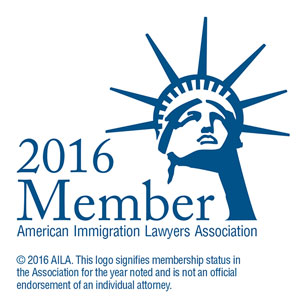Dealing With The Dreaded RFE – Reflections Of An Immigration Lawyer
RFE is the acronym for Request for Evidence. It is dreaded by immigration lawyers who file H-1B visa petitions and other applications for immigration benefits. The RFE is essentially a challenge by the immigration agency, United States Citizenship and Immigration Services (USCIS), asserting that the applicant does not appear to be qualified for the visa classification, and therefore requests additional information to adjudicate. The time given to respond to an RFE is generally 87 days. The RFE can consist of several pages of objections. Upon receiving it, the immigration lawyer must meticulously strategize a response in conjunction with the client. Responding to the RFE can take several hours, and at times days on end. It requires coordinating with others for an expert evaluation, as well as for corroborative letters from other employers and trade organizations. Although responding to an RFE is part of a routine administrative process, it feels like one is writing a brief to an appellate court. There is a lot of tension for both the lawyer and the client. If the response to the RFE cannot be overcome in the eyes of a faceless bureaucrat in a remote immigration service center, the petition is denied. The consequences can be drastic. The foreign national beneficiary falls out of status, and may have to leave the United States with family in tow. If the case was filed under the H-1B cap, filing a new one will not be possible until the employer waits for H-1B cap filing period next year, and then too there is no assurance that the H-1B will get selected under next year’s lottery.
It is not a surprise, therefore, that when the Administration does not favor a particular visa, the RFE rate increases. A case in point is the H-1B visa that has become the favorite whipping boy over several administrations. An article in Reuters by Yeganeh Torbati entitled “Trump administration red tape tangles up visas for skilled foreigners, data shows,” where I have been quoted, brilliantly shines the torch on the dreaded RFE and how it is used to distort a visa program even though this was not the intention of Congress. This article has made the RFE a household name. What the government cannot change through Congress or by amending the rules through notice and comment, it does through the RFE. If it wishes to bring about a new policy, such as insisting on the employer demonstrating an employer-employee relationship, or as seen more recently under the Trump administration, insisting on higher wages under the H-1B visa, it does so through the RFE. Even if there be no legal basis for insisting that only one who is paid more than an entry level wage can qualify for the H-1B visa, the administration tries to bring about this change through the RFE. To get a better understanding of the recent RFE trend based on entry level wages, read my prior blog H-1B Entry Level Wage Blues.
The following extract from the Reuters article is worth reproducing:
The Trump administration is making it more difficult for skilled foreigners to work in the United States, challenging visa applications more often than at nearly any point in the Obama era, according to data reviewed by Reuters.
The more intense scrutiny of the applications for H-1B visas comes after President Donald Trump called for changes to the visa program so that it benefits the highest-paid workers, though he has not enacted any such reforms.
Data provided by U.S. Citizenship and Immigration Services shows that between Jan. 1 and Aug. 31, the agency issued 85,000 challenges, or “requests for evidence” (RFEs), to H-1B visa petitions – a 45 percent increase over the same period last year. The total number of H-1B petitions rose by less than 3 percent in the same period.
The challenges, which can slow down the issuance of visas by months, were issued at a greater rate in 2017 than at any time in the Obama administration except for one year, 2009, according to the USCIS data, which has not been previously reported.
The trend is likely to cheer supporters of Trump’s hardline stance on immigration. They say visas for skilled foreigners undercut American workers by replacing them with low-paid employees shipped in from abroad. But major tech companies, universities and hospitals contend the visas allow them to fill highly specialized jobs for which there are sometimes few qualified Americans.
H-1B visas allow foreign workers, generally with bachelor’s degrees or higher, to work for three years at a time, often in the technology, healthcare and education sectors. Microsoft (MSFT.O), Amazon (AMZN.O), Google (GOOGL.O), Apple (AAPL.O), Intel (INTC.O), Oracle (ORCL.N) and Facebook (FB.O) were heavy users of H-1B visas in 2016, according to USCIS data.
The USCIS inquiries typically challenge the basis of the original petitions and assert that the employers do not qualify for the visas. Employers and their lawyers must then provide further evidence to prove their need and eligibility for the visas.
To be sure, the Obama administration also issued a large number of H-1B challenges – nearly 59,000 – from January through August 2016, and a similar number in 2015.
Immigration attorneys have for years complained about redundant and burdensome challenges to high-skilled employment visas. But they say they are seeing a new trend in the Trump era.
In addition to querying applications more often, the Trump administration is targeting entry-level jobs offered to skilled foreigners. The lawyers say this violates the law governing H-1Bs, because it allows for visa holders to take entry-level jobs.
Several attorneys said they view the increase in challenges and focus on entry-level jobs as a stealth campaign by the administration against the H-1B program in the absence of public regulatory changes or changes passed by Congress, which could be debated and decided in the open.
“One way to have an immigration policy that’s consistent with the policy that’s been articulated by the Trump administration is to put more scrutiny on H-1B cases,” said Cyrus Mehta, a New York-based immigration attorney.
You can continue to read the entire article here.
It is no accident that the issuance of 85,000 RFEs between January 1 and August 31, 2017 on H-1B visa petitions, coincided with Trump’s America First policy that got crystalized in the Buy American Hire American Executive Order. While not official, it is widely believed that the goal of the Trump administration is to curb legal immigration. Since it is difficult to meet this objective through Congress, the Administration has resorted to the issuance of RFEs on the spurious and legally unsustainable ground that a person who is offered a Level 1 wage cannot be classified for an H-1B visa. A spate of RFEs were also issued during the Obama administration on H-1B visas, after the issuance of the Neufeld Memo on January 8, 2010, which set forth the standards for determining an employer-employee relationship under 8 CFR 214.2(h)(4)(ii). However, those RFEs were issued against IT consulting firms whose business models were to place H-1B workers at third party client sites. The RFEs being issued under the Trump administration seem to curb the entire H-1B visa program.
The current trend in RFEs on H-1B visas do not just challenge the Level 1 wage, but also whether the position qualifies as a specialty occupation. The RFE also questions the beneficiary’s maintenance of F-1 status under Curricular Practical Training challenging whether the CPT constituted an integral part of the program. At times, evidence is also requested to establish that the company is doing business as stated in the H-1B petition. Many RFEs also challenge the employer-employee relationship under the Neufeld Memo. Even if the H-1B worker is not working at a client site, the RFE still asks for proof that there is sufficient work to employ the H-1B worker in the specialty occupation at the employer’s place of business. Although there has been a general upswing in the issuance of RFEs, H-1Bs appear to be getting hit the hardest.
When such an RFE is received, one should take a deep breath and respond appropriately. Imagine yourself feeding the beast in order to tame it or make it go away. If you feed the beast well, it will go away satisfied. If you do not feed it well, it will still be hungry and will come back for more. Respond to every issue raised in the RFE even if you believe that you submitted the evidence previously. If there is a silly request, still respond. For example, RFEs often ask for a weekly percentage breakdown of the duties listed in the job description. This is a rather flawed and ridiculous request, as it is rare that modern employers keep tabs of such breakdowns. Most people occupying professional positions tend to multitask, and are expected to be creative and motivated, thus going beyond what is expected of them in the official job description. You may wish to preface the response by stating that such a request has no bearing to the reality of the job, although a good faith attempt has still been made to approximately breakdown the duties into percentages. Be forewarned that if you feed the beast offal, it will not be satisfied. You need to feed it the choicest bits of meat. For example, the RFE at times erroneously asks that all of the four regulatory prongs to show that the position qualifies as a specialty occupation be satisfied, when only one needs to be satisfied:
A baccalaureate or higher degree or its equivalent is normally the minimum requirement for entry into the particular position;
The degree requirement is common to the industry in parallel positions among similar organizations or, in the alternative, an employer may show that its particular position is so complex or unique that it can be performed only by an individual with a degree;
The employer normally requires a degree or its equivalent for the position; or
The nature of the specific duties are so specialized and complex that knowledge required to perform the duties is usually associated with the attainment of a baccalaureate or higher degree.
See 8 CFR §214.2(h)(4)(iii)(A).
Thus, petitioners and their attorneys should strategically decide whether to address all four prongs or only one or more of the four prongs. At times, responding to prong 4, when there is also a challenge to the Level 1 wage, could backfire. If you demonstrate that the position is so specialized and unique, then the USCIS can hit back asserting that if the job was “so specialized and complex,” then the position could not have commanded an entry level 1 wage. On the other hand, a petitioner may have no choice but to rely on prong 4 if it is not acknowledged in the Occupational Outlook Handbook that employers always require a bachelor’s degree in the specialty occupation. For example, the OOH with respect to Computer Programmers states, “Most computer programmers have a bachelor’s degree; however, some employers hire workers with an associate’s degree.” It may be risky to rely on the first prong for the position of computer programmer since the OOH acknowledges that some are hired with an associate degree.
Even if the employer normally hires computer programmers with bachelor’s degrees under prong 3, the employer’s requirements in isolation cannot be given deference if a bachelor’s degree is not normally required by all employers, according to the holding in a Fifth Circuit Court of Appeals decision in Defensor v. Meissner, which the USCIS loves to cite in the RFE.
When relying on prong 4, it is important to justify that complex duties may be performed even with the Level 1 wage. In other words, the job duties of the challenged occupation remain complex in the O*Net, regardless of the H-1B worker performing at an entry level and being closely supervised. The reason why a Level 1 wage was assigned is because the prospective worker met the entry level wage under the DOL’s prevailing wage guidance based on less than two years of experience required for the job and not possessing unusual skills – not because the duties were any less complex. It may also be imperative to obtain an expert opinion from a professor in the same field to justify the essentiality of a bachelor’s degree, even at the entry level. The USCIS may disregard the expert opinion, but it may only reject such testimony if it is not in accord with other information in the record or is otherwise questionable. In Matter of Skirball Cultural Center, the AAO held that uncontroverted testimony of an expert is reliable, relevant, and probative as to the specific facts in issue.
In this author’s experience, most RFEs can be overcome and the H-1B visa petition is approved. It is difficult to predict whether this trend will continue under the Trump Administration’s Buy American Hire American Executive Order. The EO aims to create higher wages and employment rates for U.S. workers, and directs the Secretaries of State, Labor, and Homeland Security, as well as the Attorney General, to issue new rules and guidance to protect the interests of U.S. workers in the administration of the immigration system. The EO highlights the H-1B visa program and directs the agencies to ensure that H-1B visas are awarded to the most skilled and highest-paid beneficiaries.
If the H-1B is denied, it is not the end of the road. The denial can be appealed to the Administrative Appeals Office, and it is also possible that the USCIS can reconsider the denial before it is sent to the AAO. If the AAO denies, the denial can also be challenged in federal court. In fact, it is also permissible under Darby v. Cisneros to bypass the AAO and challenge the denial directly in federal court. It is quite likely that if there is a pattern and practice of denials on the Level 1 wage issue, there will be challenges in federal court that will review the case with a different lens from the USCIS or AAO.
There was a time when it was thought that RFEs issued under the Neufeld Memo were insurmountable. Soon, upon meticulously addressing those RFEs, employers and their lawyers were able to overcome the objections and get an H-1B approval by establishing the employer-employee relationship. Likewise, there are even stronger arguments to demonstrate that the mere offering of a level 1 wage does not disqualify a foreign national form H-1B classification, which should hopefully overcome the recent spate of RFEs.




